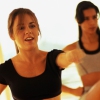
Warming up: a must-do for musicians and singers
Heat up the hands
In general, regardless of the instrument, you depend on your hands. Start with a series of warm-ups in the wrist, rotating them round and round. Continue with the fingers and make circular movements making sure to devote time to each one individually. Alternate with massages to stimulate blood circulation.Stretching
Stretching allows targeted action on the ligaments that will stretch and over time allow for better posture and range, helping to prevent friction and trauma. Spread your fingers to reach maximum width and then pull the tip of your fingers backward (do not use force).Chromaticism
At first glance, chromaticism (using notes that fall outside the scale) may seem abnormal and globally counterproductive.This form of warm up however is an essential step for any musician. In guitar or bass, for example, chromaticism is possible on every string; place the index finger on the first fret, middle finger on the second, the ring finger on the third and pinkie on the fourth. When you master this movement try going faster and alternating between high and low notes.Chromaticism has double advantages:
- They can "untie" your fingers, exercise your agility and make for an overall good warm up.
- They require both hands be involved in improving coordination and synchronicity.
Separate fingers
Warm ups are not just for muscles, they can also be useful for synchronization and separation between the hands and fingers. Here's an exercise for piano: place your hands on the keyboard and simultaneously press down with the pinkie of the left hand and the thumb of the right hand and the left ring finger and forefinger of the right hand. Follow this while pressing down the middle fingers of both hands, index finger of the left hand and ring finger of the right hand and finally the thumb of the left hand and the pinkie of the right.A complete warm up
Drummers use their entire body and are required to exercise their hands as much as their legs. They can start by snare rolls, moderate but prolonged, and then slowly integrate the feet, doing this for three or four minutes without interruption.The voice, a muscle to exercise
Singers must constantly be in warm up mode. Several exercises are available for an effective overall warmup:- Relax the jaw by vocalizing while opening the jaw repeatedly, saying "Ya" for example, first from the chest, then from the head voice while massaging cheeks in a circular fashion with the palm of the hands.
- Make ventral breathing exercises
- Sing a variety of vocal ranges
- Make trills with your tongue and with your lips
Published on: October 1, 2015




